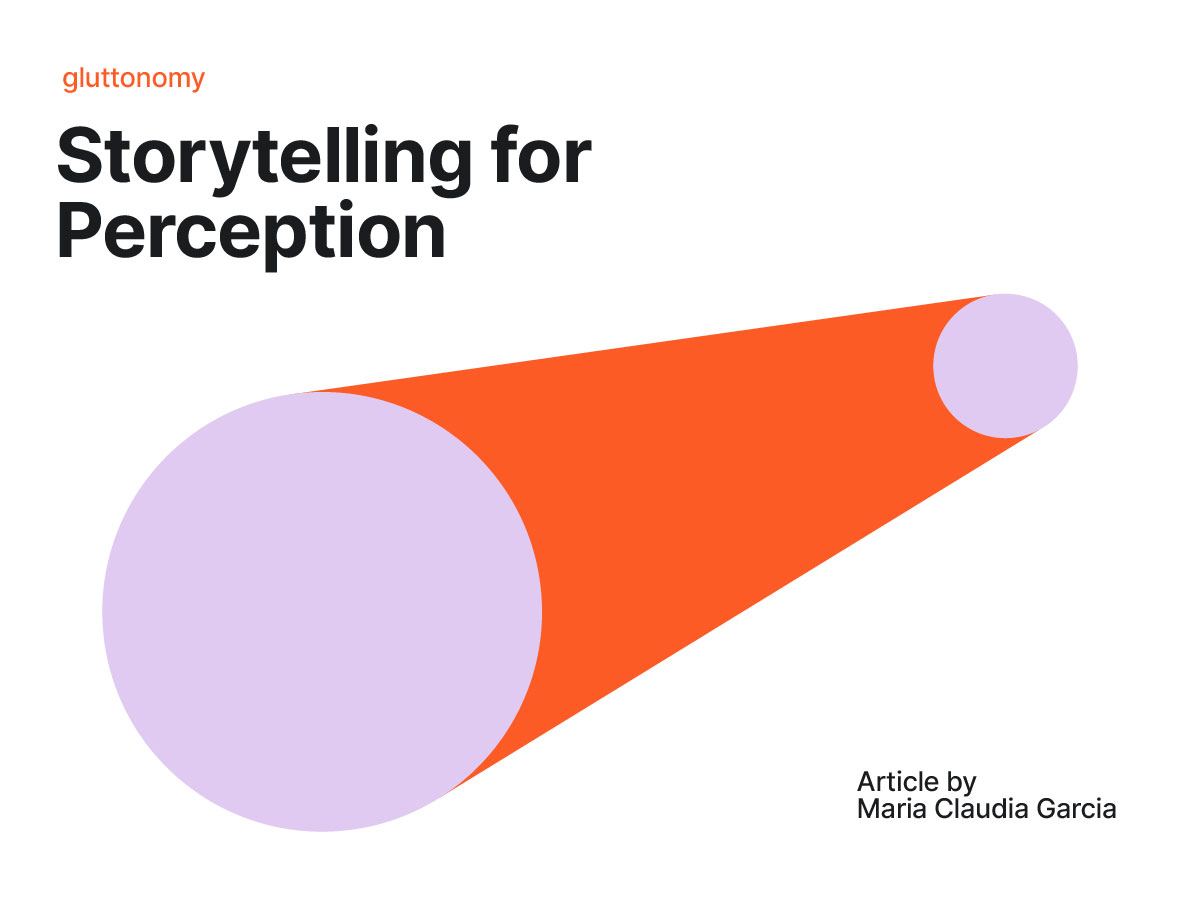Storytelling for Perception

For years, the word "storytelling" has been present in most marketing strategies across industries. However, it seems that the more people understand the importance of this practice, the more the point of doing it loses its value. In the food industry, this characteristic is always present but seldomly exploited. Eating has a beginning, a development, and a closure; it has a purpose and a journey, an influence and a personality, a conflict and a resolution. Whether fine dining, waiting in front of a small stall at a street market, or finally getting that new product at the supermarket, eating in itself is a story. Successfully working with this quality can be a powerful tool for any food business.
People commonly implement storytelling techniques to get a selected audience to know more about their brand. In reality, successful storytelling does not intend to be exclusively informative but also to provide the customer with an experience. This concept is solely about creating an environment that people will engage with through their senses. Culinary professionals naturally (and almost thoughtlessly) understand how to engage their customers holistically. They can effortlessly design an experience by leveraging a simple truth: we already engage most of our senses to eat. Nonetheless, having great food with incredible service sometimes falls short when choosing where to eat. Factors like ambiance, food sourcing, and cooking techniques become part of a story each eater unconsciously builds in their head during a dining encounter.
The true art here is not explicitly telling a story; but rather allowing the diners' minds to feel and create something of their own after interpreting a series of subtle clues. These clues are tangible & real; they permit the eater to live the story, not just listen to it. Clues have to be easy to recognize. They keep the diner focused and invested. And most importantly, they are not meant to state anything but to evoke individual interpretation. We can quickly identify this approach in many fine dining examples. There are many exemplars of haute cuisine (restaurants like Central by Virgilio Martínez, Noma by René Redzepi, and Asador Etxebarri by Victor Arguinzoniz) that don't only tell a story with words but also with ingredients, techniques, and platings. They purposely let their message bleed in constant contiguity with their diners, and their diners will leave these restaurants with a very personal and intimate take on their experience.
There is little need to put extensive time and energy into finding what to say. There is appreciable profit in putting considerable time and energy into how we say it. One specific tool to leverage is relatability. We all want to find ourselves in others. Even behind the most corporate settings, to our core, we are all just human. By letting people entertain a personal interpretation, we are also encouraging them to insert themselves into the narrative.
Counterintuitively, anything can be a great story. The quality that makes a story worth telling is not a succession of events but rather the takeaway the account brings to the consumer. The plot does not have to be extensive or detailed; it just has to be oriented, clear, and, in one way or another, give 'something' to the customer. Finding this 'something' is as simple as asking oneself if we believe what we have to say can influence how others perceive the world around them.
Also, we should remember that, as human beings, we tend to fixate on outcomes. Once we find an end to pursue, we do everything to get there. But in storytelling, the reason behind a goal is as important as the goal itself. With an established driver behind our objectives, we execute actions coherently. Our story becomes easier to follow. In any food-related scenario, people are always in a position where they expect something in return. Their food, for starters. But now, more than ever, people anticipate more. They do not want extra, better, or bigger; they want a reason to support your project over anybody else's.
Whether we acknowledge them or not, stories are always present around us. They are psychologically responsible for how we interpret our experiences. Storytelling is, in fact, a powerful marketing tool, but not through persuasion or attention seeking. But because it allows us to mold how our businesses are perceived.
- BrandStrategy
- -
- food
- -
- Food Culture
- -
- Trends
- -
- Food marketing
- -
- Storytelling